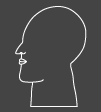
Stephen Daly




Statement:
Located in Austin, Texas, I am a contemporary artist interested in making work that has a strong visual presence and communicates ideas that may be interpreted in multiple ways. Formal development is usually complimented by context, use of materials, and scale. A successful piece is remembered by the viewer.
My work includes sculpture (cast and fabricated metals), ink drawings (ink and watercolor on paper and Mylar), and pieces in which the two are formally and conceptually integrated.
I enjoy the static, deliberate nature of sculpture and its existence in the same space as that of the viewer. Conversely, the gesture, immediacy and atmosphere possible in drawing can accomplish much that the discrete object cannot. Works incorporating both drawing and sculpture can bridge the two distinct art forms.
Content probes the ways in which we communicate with one another or with nature. The psychological aspect of communication is explored by investigating how we use our senses to see, hear, think, and wonder. A mix of formal, symbolic, and referential elements converge to bring viewers into a ballpark of content or associations, leaving their experiences to be enhanced through personal observation or interpretation. Sardonic humor is often used to undermine pretense and bring levity to the dialogue.
In some works an activity is portrayed. In these “situational” pieces, the viewer approaches to find the main subject concentrating on a single or series of objects (in sculptural works), or a projected form (in drawings), held in its gaze. Presenting an additional layer of content, these works leave the viewer to consider not only the figurative subject, but the situation in which the subject is involved. Rather than “looking into the eyes” of the figure, the viewer is witness to the figure and its contemplative relationship to the object.
While some works incline towards reduction, others are obsessive and maximal, combining large and small elements in a field of particles. Geometric, abstract, and symbolic forms illuminate bits of information that may collectively bring the viewer toward the intended point, an emotional condition, or a level of visual satisfaction.
The move to Texas saw the introduction of a distinctly figurative element in my sculpture and the beginning of drawing as an art form (as opposed to sketches for sculpture). The concepts of “situational” work and of “particulated” imagery (many independent forms working as a whole) continue today.
For more detailed biographical and artistic information, I recommend reading an essay by critic Susie Kalil and also refer you to the catalogue accompanying the 2002 retrospective in Valencia, Spain. It contains an extended biography as well as an essay by Spanish critic Marina Pastor.
